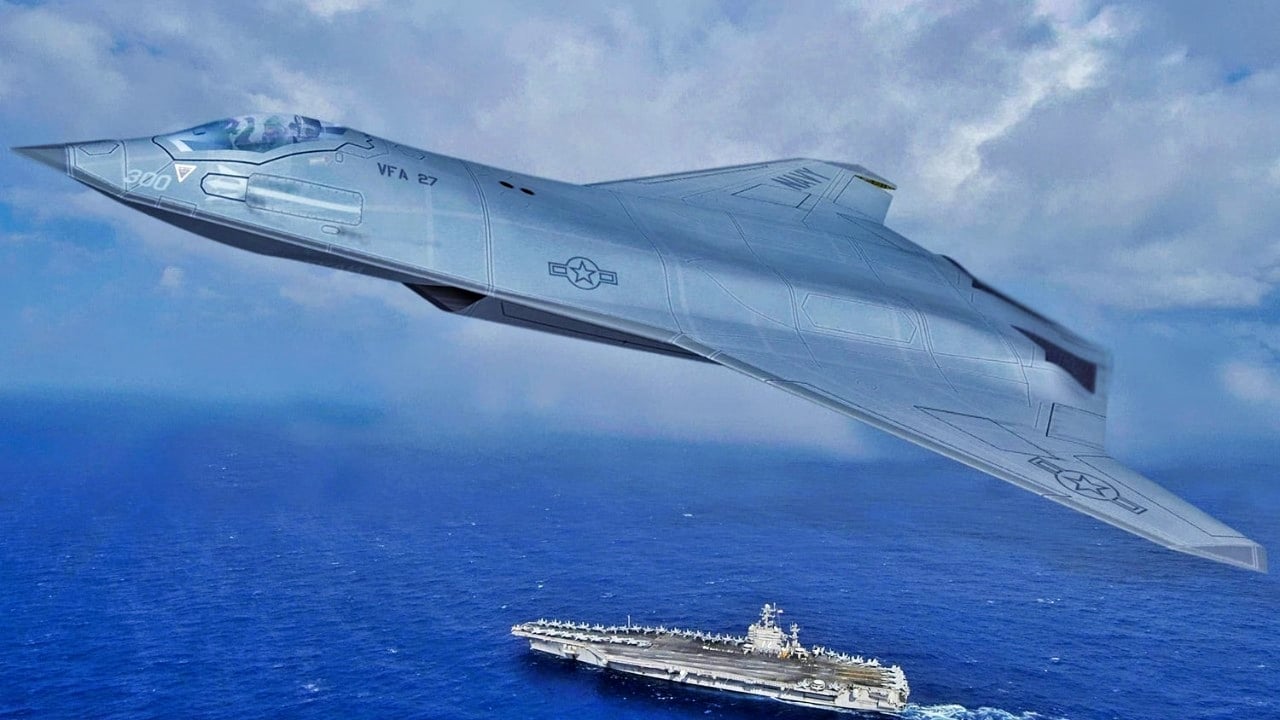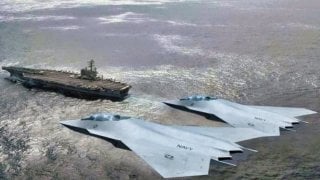China Is Freaking Out: The F/A-XX 6th Generation Fighter Could Be Epic
The U.S. Navy's F/A-XX fighter program is set to replace the F/A-18 Block II Super Hornet and will serve as the “quarterback” for manned and unmanned aircraft.
Summary: The U.S. Navy's F/A-XX fighter program is set to replace the F/A-18 Block II Super Hornet and will serve as the “quarterback” for manned and unmanned aircraft.

-This future sixth-generation fighter will complement the F-35C Lightning II and UCLASS unmanned aircraft, addressing long-range operational needs and next-generation survivability.
-While detailed specifications remain classified, the F/A-XX will feature an open architecture for various payloads and sensors and will support autonomous operations.
-Despite its importance, the Navy has delayed the program to prioritize current readiness amidst heightened global tensions.
Navy's F/A-XX Fighter: The Future of Air Superiority
The U.S. Air Force’s Next Generation Air Dominance fighter program has earned plenty of coverage in recent months. But the Navy has a sixth-generation fighter program of its own.
When the F/A-XX future fighter eventually enters service, it will operate as the Navy’s “quarterback” for manned and unmanned aircraft. The future fighter series is planned to replace the F/A-18 Block II Super Hornet.
Unlike the Air Force, however, the Navy has opted to delay development of the F/A-XX in order to free up resources for current readiness needs.
What We Know About the F/A-XX Fighter Program
While exact specs and capabilities surrounding the F/A-XX remain highly classified, some information has been divulged to the public. A Navy spokesperson last year asserted that the service had “identified operational reach, capacity, long range kill chains, autonomy, and next generation survivability as key enablers in the Air Wing of the Future and supporting Family of System,” according to Breaking Defense.
The Navy first issued a formal request for gathering information and research on a sixth-generation platform over a decade ago. Since the F/A-18 Super Hornet and EA-18G Growler are nearing the end of production, introducing a next-generation jet series is essential to maintaining air superiority.
The new aircraft will complement the existing F-35C Lightning II fighter and UCLASS unmanned aircraft and will be deployed to operate in anti-access/area denial environments. As tensions continue to ramp up between Washington and Beijing over the South China Sea, the new F/A-XX series will need long-range capabilities in order to traverse the huge swaths of ocean that define the Indo-Pacific region.
Analysts agree that the Navy’s new fighter will be involved in uncrewed operations. The war in Ukraine has highlighted the important role these cheap and easily operable unmanned aerial vehicle systems can play in modern warfare. In fact, the Air Force’s upcoming NGAD platform will include “wingmen drones” to fly alongside crewed fighters. Perhaps most significantly, the Navy’s new fighter is expected to feature an open architecture design that will enable a range of payloads, weapons, and sensors to be interchanged.
While the F/A-XX will be critical for the Navy as Beijing and Moscow continue to work on their own sixth-generation programs, the service is currently prioritizing existing systems.

Since Hamas’s October 7 attack against Israel, the Navy’s carriers and other ships have been deployed more frequently to the Middle East in order to contend with hostile actors in the region. The Navy has been busy in the Red Sea, shooting down barrages launched by Iran and its affiliates. China is also a threat to invade the island nation of Taiwan, forcing the U.S. Navy to always be on alert in the South Pacific. For now, the service’s decision to focus on current capabilities in light of these threats appears to be the right one.
About the Author: Maya Carlin
Maya Carlin, National Security Writer with The National Interest, is an analyst with the Center for Security Policy and a former Anna Sobol Levy Fellow at IDC Herzliya in Israel. She has by-lines in many publications, including The National Interest, Jerusalem Post, and Times of Israel. You can follow her on Twitter: @MayaCarlin.
Images are from Creative Commons or Shutterstock.


